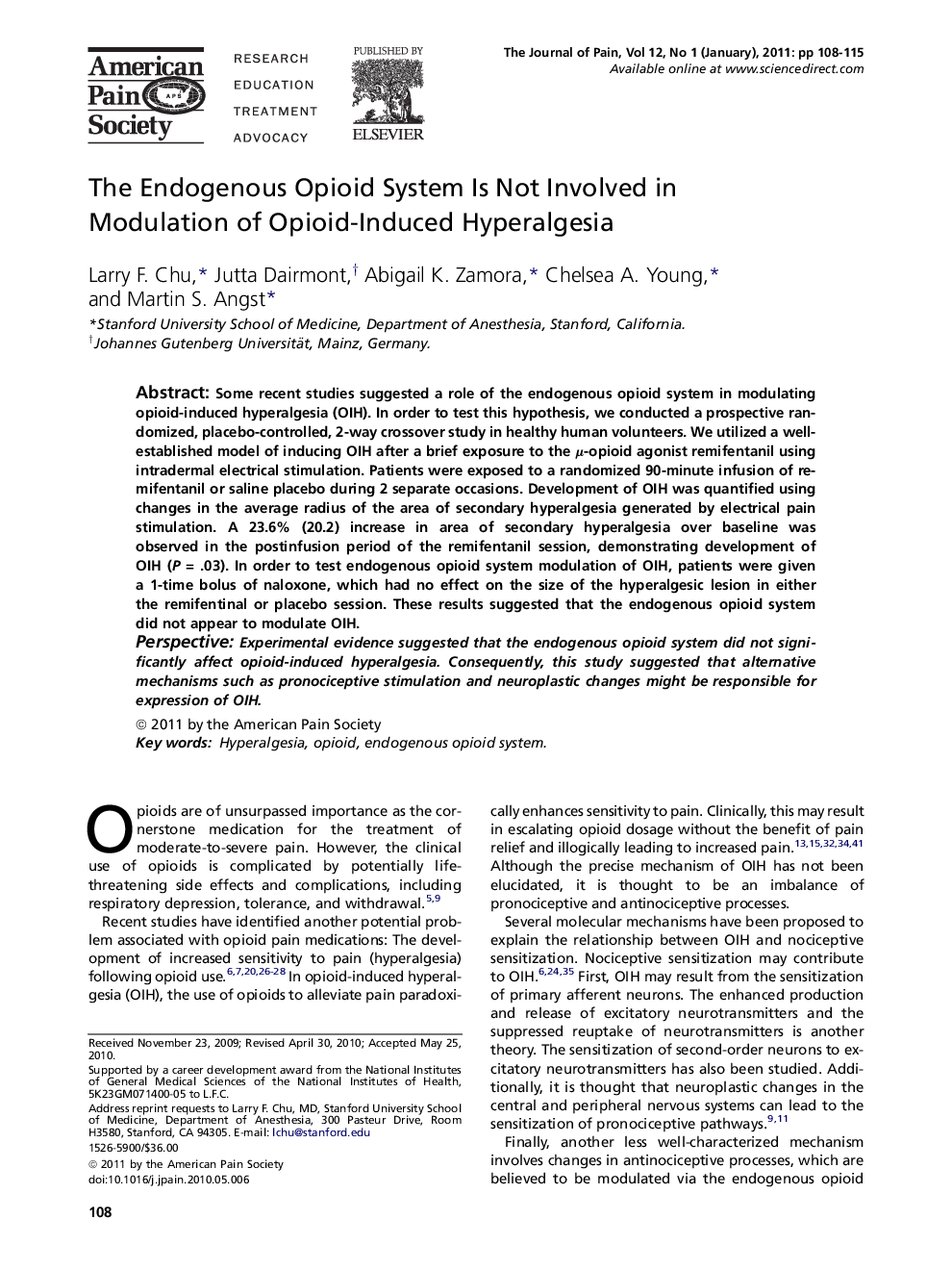| کد مقاله | کد نشریه | سال انتشار | مقاله انگلیسی | نسخه تمام متن |
|---|---|---|---|---|
| 2723272 | 1566793 | 2011 | 8 صفحه PDF | دانلود رایگان |

Some recent studies suggested a role of the endogenous opioid system in modulating opioid-induced hyperalgesia (OIH). In order to test this hypothesis, we conducted a prospective randomized, placebo-controlled, 2-way crossover study in healthy human volunteers. We utilized a well-established model of inducing OIH after a brief exposure to the μ-opioid agonist remifentanil using intradermal electrical stimulation. Patients were exposed to a randomized 90-minute infusion of remifentanil or saline placebo during 2 separate occasions. Development of OIH was quantified using changes in the average radius of the area of secondary hyperalgesia generated by electrical pain stimulation. A 23.6% (20.2) increase in area of secondary hyperalgesia over baseline was observed in the postinfusion period of the remifentanil session, demonstrating development of OIH (P = .03). In order to test endogenous opioid system modulation of OIH, patients were given a 1-time bolus of naloxone, which had no effect on the size of the hyperalgesic lesion in either the remifentinal or placebo session. These results suggested that the endogenous opioid system did not appear to modulate OIH.PerspectiveExperimental evidence suggested that the endogenous opioid system did not significantly affect opioid-induced hyperalgesia. Consequently, this study suggested that alternative mechanisms such as pronociceptive stimulation and neuroplastic changes might be responsible for expression of OIH.
Journal: The Journal of Pain - Volume 12, Issue 1, January 2011, Pages 108–115